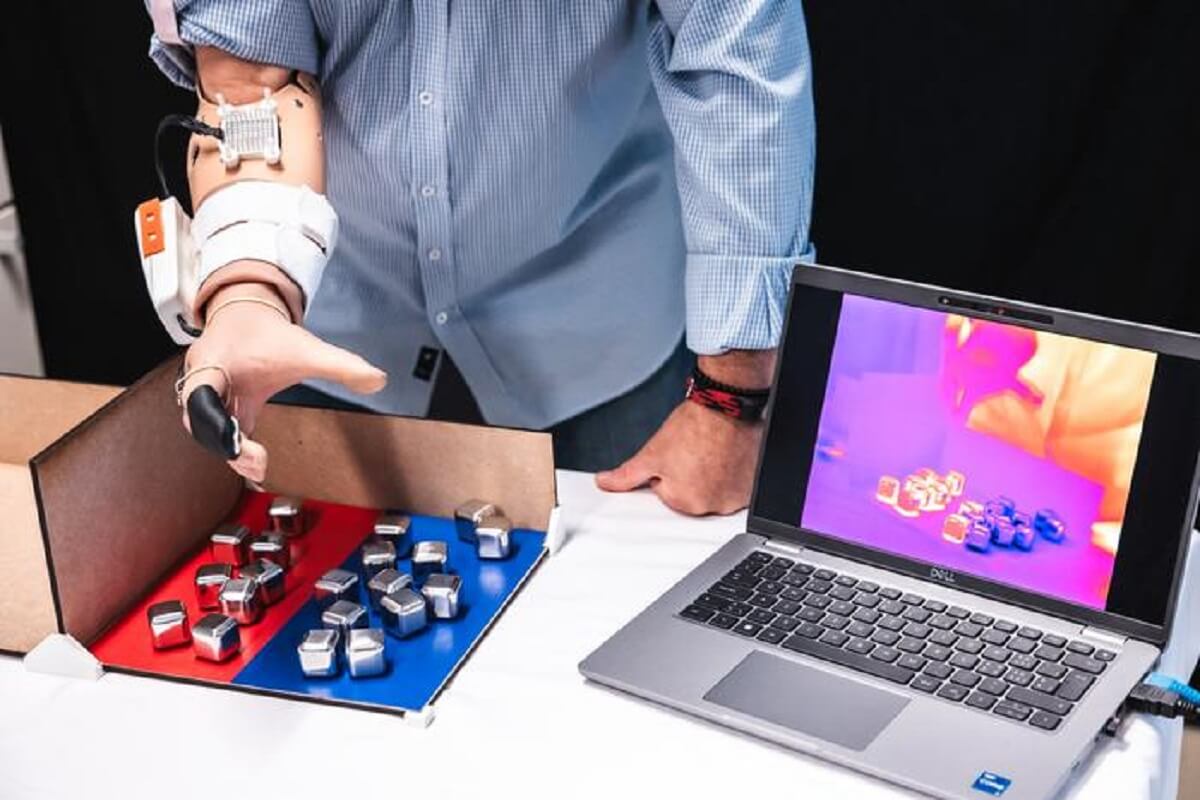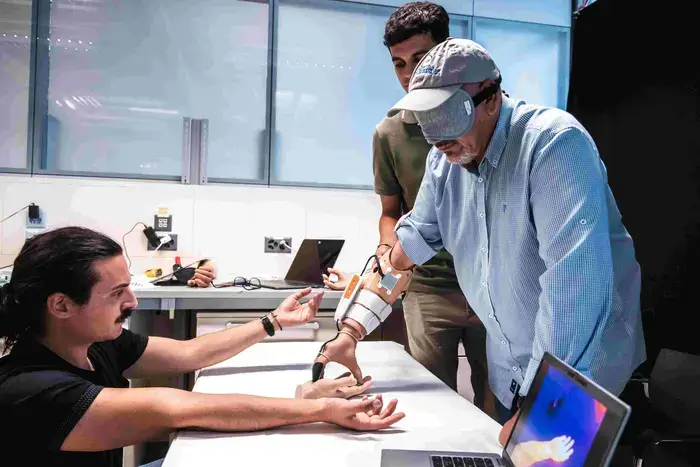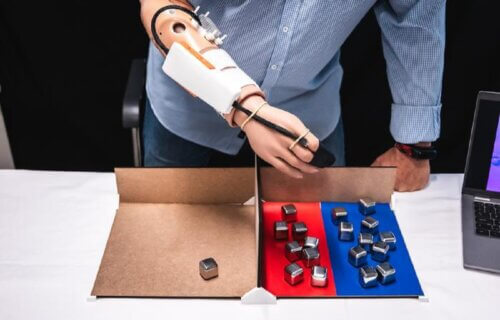LAUSANNE, Switzerland — Scientists have developed the first prosthetic limb that enables wearers to experience temperature sensations, including feeling the warmth of another person, marking a significant advancement in prosthetic technology.
Dubbed the MiniTouch, this innovative device is designed to significantly enhance amputees’ ability to connect with others by allowing them to perceive and react to temperature changes. This state-of-the-art prosthetic transmits thermal information from the prosthetic hand’s fingertips to the arm of the wearer, enabling amputees to distinguish between hot and cold objects with remarkable accuracy. For the first time in over 30 years, a user was able to feel the warmth of another person’s hand through their prosthetic, highlighting the device’s potential to restore a sense of normalcy and connection for amputees.
Developed by a collaborative team from Italy and Switzerland, the MiniTouch aims to bring back a comprehensive range of sensations to those with amputated limbs. Sensory feedback plays a crucial role in enabling amputees to interact more effectively with their surroundings, and the MiniTouch, equipped with sensors that provide real-time thermal feedback, seeks to reintroduce the tactile experiences of touch.
The device’s impact was clearly demonstrated by Fabrizio, a 57-year-old from Pistoia, Italy. After losing his hand 37 years ago, he experienced the powerful emotion of feeling warmth through the prosthetic. Fabrizio’s ability to identify and sort objects based on their temperature or material further underscores the device’s effectiveness.

The introduction of natural temperature sensations into a functional artificial limb represents a pioneering step in prosthetic development.
“Temperature is one of the last frontiers to restoring sensation to robotic hands. For the first time, we’re really close to restoring the full palette of sensations to amputees,” says Professor Silvestro Micera, one of the study’s senior authors from Sant’Anna School of Advanced Studies and École Polytechnique Fédérale de Lausanne (EPFL), in a media release. “This is a very simple idea that can be easily integrated into commercial prostheses.”
Clinical trials conducted in Bologna, Italy demonstrated the device’s precision, with Fabrizio distinguishing between bottles filled with liquids at varying temperatures with flawless accuracy — a stark improvement from his performance without the device. Additionally, the MiniTouch enhanced his ability to differentiate between metal cubes of different temperatures and to identify human versus prosthetic arms while blindfolded.
“When you reach a certain level of dexterity with robotic hands, you really need to have sensory feedback to really be able to use the robotic hand to its full potential,” says Dr. Solaiman Shokur, a joint senior author from EPFL, in a media release. “Adding temperature information makes the touch more human-like. We think having the ability to sense temperature will improve amputees’ embodiment – the feeling that ‘this hand is mine’.”

The integration of temperature sensation is expected to not only improve the dexterity with which amputees can use their prosthetic hands but also deepen their sense of ownership over the prosthetic, making it feel more like a natural part of their body. This advancement in neuroprosthetics, which has traditionally overlooked thermal sensations, opens new possibilities for enhancing amputees’ daily lives by restoring a fuller spectrum of sensory experiences.
Looking ahead, the team is focused on refining the MiniTouch for home use and expanding its capabilities to include thermal information from multiple points on an amputee’s limb.
“Our goal now is to develop a multimodal system that integrates touch, perception, and temperature sensations,” Dr. Shokur says. “With that type of system, people will be able to tell you ‘this is soft and hot’, or ‘this is hard and cold’.”
The study is published in the journal Med.
SWNS writer James Gamble contributed to this report.
